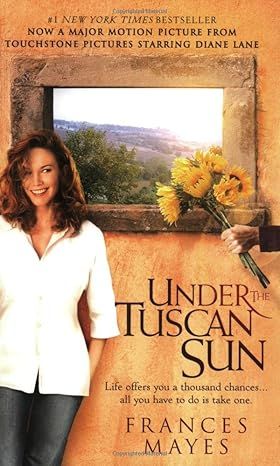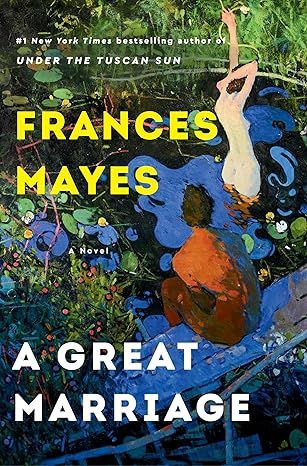Under the Tuscan Sun: At Home in ItalyPaperback
4.2
-
2,272 ratings
#1 NEW YORK TIMES BESTSELLER • The beloved memoir of self-discovery set against the spectacular Tuscan countryside that inspired the major motion picture starring Diane Lane—now in a twentieth-anniversary edition featuring a new afterword
“This beautifully written memoir about taking chances, living in Italy, loving a house and, always, the pleasures of food, would make a perfect gift for a loved one. But it’s so delicious, read it first yourself.”—USA Today
For more Frances Mayes, including a tour of her now iconic Cortona home, Bramasole, watch PBS’s Dream of Italy: Tuscan Sun Special!
More than twenty years ago, Frances Mayes—widely published poet, gourmet cook, and travel writer—introduced readers to a wondrous new world when she bought and restored an abandoned Tuscan villa called Bramasole. Under the Tuscan Sun inspired generations to embark on their own journeys—whether that be flying to a foreign country in search of themselves, savoring one of the book’s dozens of delicious seasonal recipes, or simply being transported by Mayes’s signature evocative, sensory language. Now with a new afterword from Frances Mayes, the twentieth-anniversary edition of Under the Tuscan Sun revisits the book’s most popular characters.
Kindle
$12.99
Available instantly
Audiobook
$0.00
with membership trial
Hardcover
$57.28
Paperback
$6.30
Ships from
Amazon.com
Payment
Secure transaction
ISBN-10
0767916069
ISBN-13
978-0767916066
Print length
336 pages
Language
English
Publisher
Broadway
Publication date
August 25, 2003
Dimensions
5.5 x 0.75 x 8 inches
Item weight
8.8 ounces
Product details
ASIN :
B000FBJDAW
File size :
9194 KB
Text-to-speech :
Enabled
Screen reader :
Supported
Enhanced typesetting :
Enabled
X-Ray :
Not Enabled
Word wise :
Enabled
Editorial reviews
A New York Times Notable Book
"This beautifully written memoir about taking chances, living in Italy. loving a house and, always, the pleasures of food, would make a perfect gift for a loved one. But it's so delicious, read it first yourself." —USA Today
"Irresistible...a sensous book for a sensous countryside." —Minneapolis Star-Tribune
“An intense celebration of what [Mayes] calls ‘the voluptuousness of Italian life’ . . . appealing and very vivid . . . [The] book seems like the kind of thing you’d tuck into a picnic basket on an August day . . . or better yet, keep handy on the bedside table in the depths of January.” —New York Times Book Review
"Armchair travel at its most enticing." —Booklist
“Mayes [has] perfect vision. . . . I do not doubt that centuries form now, whoever lives in Bramasole will one day uncover bits of pottery used at Mayes’ table. She has, by the sweat of her brow and the strength of her vision, become a layer in the history of this place.” —Los Angeles Times
"After buying a rundown villa in rural Tuscany, the American author Frances Mayes moves to Cortona to renovate the property and learn more about the Italian dolce vita. Her bestselling memoir on her time there paints a vivid description of the town, the people and the lush surrounding countryside of rolling hills and vineyards. A poet and a gourmet cook, Mayes includes a number of chapters on food, replete with classic Italian recipes to further whet the appetite." —Irish Times
Read more
Sample
I am about to buy a house in a foreign country. A house with the beautiful name of Bramasole. It is tall, square, and apricot-colored with faded green shutters, ancient tile roof, and an iron balcony on the second level, where ladies might have sat with their fans to watch some spectacle below. But below, overgrown briars, tangles of roses, and knee-high weeds run rampant. The balcony faces southeast, looking into a deep valley, then into the Tuscan Apennines. When it rains or when the light changes, the facade of the house turns gold, sienna, ocher; a previous scarlet paint job seeps through in rosy spots like a box of crayons left to melt in the sun. In places where the stucco has fallen away, rugged stone shows what the exterior once was. The house rises above a strada bianca, a road white with pebbles, on a terraced slab of hillside covered with fruit and olive trees. Bramasole: from bramare, to yearn for, and sole, sun: something that yearns for the sun, and yes, I do.
The family wisdom runs strongly against this decision. My mother has said “Ridiculous,” with her certain and forceful stress on the second syllable, “RiDICulous,” and my sisters, although excited, fear I am eighteen, about to run off with a sailor in the family car. I quietly have my own doubts. The upright seats in the notaio’s outer office don’t help. Through my thin white linen dress, spiky horsehairs pierce me every time I shift, which is often in the hundred-degree waiting room. I look over to see what Ed is writing on the back of a receipt: Parmesan, salami, coffee, bread. How can he? Finally, the signora opens her door and her torrential Italian flows over us.
The notaio is nothing like a notary; she’s the legal person who conducts real-estate transactions in Italy. Ours, Signora Mantucci, is a small, fierce Sicilian woman with thick tinted glasses that enlarge her green eyes. She talks faster than any human I have ever heard. She reads long laws aloud. I thought all Italian was mellifluous; she makes it sound like rocks crashing down a chute. Ed looks at her raptly; I know he’s in thrall to the sound of her voice. The owner, Dr. Carta, suddenly thinks he has asked too little; he must have, since we have agreed to buy it. We think his price is exorbitant. We know his price is exorbitant. The Sicilian doesn’t pause; she will not be interrupted by anyone except by Giuseppe from the bar downstairs, who suddenly swings open the dark doors, tray aloft, and seems surprised to see his Americani customers sitting there almost cross-eyed in confusion. He brings the signora her midmorning thimble of espresso, which she downs in a gulp, hardly pausing. The owner expects to claim that the house cost one amount while it really cost much more. “That is just the way it’s done,” he insists. “No one is fool enough to declare the real value.” He proposes we bring one check to the notaio’s office, then pass him ten smaller checks literally under the table.
Anselmo Martini, our agent, shrugs.
Ian, the English estate agent we hired to help with translation, shrugs also.
Dr. Carta concludes, “You Americans! You take things so seriously. And, per favore, date the checks at one-week intervals so the bank isn’t alerted to large sums.”
Was that the same bank I know, whose sloe-eyed teller languidly conducts a transaction every fifteen minutes, between smokes and telephone calls? The signora comes to an abrupt halt, scrambles the papers into a folder and stands up. We are to come back when the money and papers are ready.
A window in our hotel room opens onto an expansive view over the ancient roofs of Cortona, down to the dark expanse of the Val di Chiana. A hot and wild wind—the scirocco—is driving normal people a little crazy. For me, it seems to reflect my state of mind. I can’t sleep. In the United States, I’ve bought and sold a few houses before—loaded up the car with my mother’s Spode, the cat, and the ficus for the five- or five-thousand-mile drive to the next doorway where a new key would fit. You have to churn somewhat when the roof covering your head is at stake, since to sell is to walk away from a cluster of memories and to buy is to choose where the future will take place. And the place, never neutral of course, will cast its influence. Beyond that, legal complications and contingencies must be worked out. But here, absolutely everything conspires to keep me staring into the dark.
Italy always has had a magnetic north pull on my psyche. Houses have been on my mind for four summers of renting farmhouses all over Tuscany. In the first place Ed and I rented with friends, we started calculating on the first night, trying to figure out if our four pooled savings would buy the tumbled stone farm we could see from the terrace. Ed immediately fell for farm life and roamed over our neighbors’ land looking at the work in progress. The Antolinis grew tobacco, a beautiful if hated crop. We could hear workers shout “Vipera!” to warn the others of a poisonous snake. At evening, a violet blue haze rose from the dark leaves. The well-ordered farm looked peaceful from the vantage point of our terrace. Our friends never came back, but for the next three vacations, the circuitous search for a summer home became a quest for us—whether we ever found a place or not, we were happening on places that made pure green olive oil, discovering sweet country Romanesque churches in villages, meandering the back roads of vineyards, and stopping to taste the softest Brunello and the blackest Vino Nobile. Looking for a house gives an intense focus. We visited weekly markets not just with the purchase of picnic peaches in mind; we looked carefully at all the produce’s quality and variety, mentally forecasting birthday dinners, new holidays, and breakfasts for weekend guests. We spent hours sitting in piazzas or sipping lemonade in local bars, secretly getting a sense of the place’s ambiance. I soaked many a heel blister in a hotel bidet, rubbed bottles of lotion on my feet, which had covered miles of stony streets. We hauled histories and guides and wildflower books and novels in and out of rented houses and hotels. Always we asked local people where they liked to eat and headed to restaurants our many guidebooks never mentioned. We both have an insatiable curiosity about each jagged castle ruin on the hillsides. My idea of heaven still is to drive the gravel farm roads of Umbria and Tuscany, very pleasantly lost.
Cortona was the first town we ever stayed in and we always came back to it during the summers we rented near Volterra, Florence, Montisi, Rignano, Vicchio, Quercegrossa, all those fascinating, quirky houses. One had a kitchen two people could not pass in, but there was a slice of a view of the Arno. Another kitchen had no hot water and no knives, but the house was built into medieval ramparts overlooking vineyards. One had several sets of china for forty, countless glasses and silverware, but the refrigerator iced over every day and by four the door swung open, revealing a new igloo. When the weather was damp, I got a tingling shock if I touched anything in the kitchen. On the property, Cimabue, legend says, discovered the young Giotto drawing a sheep in the dirt. One house had beds with back-crunching dips in the middles. Bats flew down the chimney and buzzed us, while worms in the beams sent down a steady sifting of sawdust onto the pillows. The fireplace was so big we could sit in it while grilling our veal chops and peppers.
We drove hundreds of dusty miles looking at houses that turned out to be in the flood plain of the Tiber or overlooking strip mines. The Siena agent blithely promised that the view would be wonderful again in twenty years; replanting stripped areas was a law. A glorious medieval village house was wildly expensive. The saw-toothed peasant we met in a bar tried to sell us his childhood home, a windowless stone chicken house joined to another house, with snarling dogs lunging at us from their ropes. We fell hard for a farm outside Montisi; the contessa who owned it led us on for days, then decided she needed a sign from God before she could sell it. We had to leave before the sign arrived.
As I think back over those places, they suddenly seem preposterously alien and Cortona does, too. Ed doesn’t think so. He’s in the piazza every afternoon, gazing at the young couple trying to wheel their new baby down the street. They’re halted every few steps. Everyone circles the carriage. They’re leaning into the baby’s face, making noises, praising the baby. “In my next life,” Ed tells me, “I want to come back as an Italian baby.” He steeps in the piazza life: the sultry and buffed man pushing up his sleeve so his muscles show when he languidly props his chin in his hand; the pure flute notes of Vivaldi drifting from an upstairs window; the flower seller’s fan of bright flowers against the stone shop; a man with no neck at all unloading lambs from his truck. He slings them like flour sacks over his shoulder and the lambs’ eyeballs bulge out. Every few minutes, Ed looks up at the big clock that has kept time for so long over this piazza. Finally, he takes a stroll, memorizing the stones in the street.
Across the hotel courtyard a visiting Arab chants his prayers toward dawn, just when I finally can fall asleep. He sounds as though he is gargling with salt water. For hours, he rings the voice’s changes over a small register, over and over. I want to lean out and shout, “Shut up!” Now and then I have to laugh. I look out, see him nodding in the window, a sweet smile on his face. He reminds me so much of tobacco auctioneers I heard in hot warehouses in the South as a child. I am seven thousand miles from home, plunking down my life savings on a whim. Is it a whim? It feels very close to falling in love and that’s never really whimsical but comes from some deep source. Or does it?
Each time we step out of the cool, high rooms of the hotel and into the sharp-edged sun, we walk around town and like it more and more. The outdoor tables at Bar Sport face the Piazza Signorelli. A few farmers sell produce on the steps of the nineteenth-century teatro every morning. As we drink espresso, we watch them holding up rusty hand scales to weigh the tomatoes. The rest of the piazza is lined with perfectly intact medieval or Renaissance palazzi. Easily, someone might step out any second and break into La Traviata. Every day we visit each keystoned medieval gate in the Etruscan walls, explore the Fiat-wide stone streets lined with Renaissance and older houses and the even narrower vicoli, mysterious pedestrian passageways, often steeply stepped. The bricked-up fourteenth-century “doors of the dead” are still visible. These ghosts of doors beside the main entrance were designed, some say, to take out the plague victims—bad luck for them to exit by the main entrance. I notice in the regular doors, people often leave their keys in the lock.
Guidebooks describe Cortona as “somber” and “austere.” They misjudge. The hilltop position, the walls and upright, massive stone buildings give a distinctly vertical feel to the architecture. Walking across the piazza, I feel the abrupt, angular shadows fall with Euclidean purity. I want to stand up straight—the upright posture of the buildings seems to carry over to the inhabitants. They walk slowly, with very fine, I want to say, carriage. I keep saying, “Isn’t she beautiful?” “Isn’t he gorgeous?” “Look at that face—pure Raphael.” By late afternoon, we’re sitting again with our espressi, this time facing the other piazza. A woman of about sixty with her daughter and the teenage granddaughter pass by us, strolling, their arms linked, sun on their vibrant faces. We don’t know why light has such a luminous quality. Perhaps the sunflower crops radiate gold from the surrounding fields. The three women look peaceful, proud, impressively pleased. There should be a gold coin with their faces on it.
Meanwhile, as we sip, the dollar is falling fast. We rouse ourselves from the piazza every morning to run around to all the banks, checking their posted exchange rates. When you’re cashing traveler’s checks for a last-minute spree at the leather market, the rate doesn’t matter that much, but this is a house with five acres and every lira counts. A slight drop at those multiples makes the stomach drop also. Every hundred lire it falls, we calculate how much more expensive the house becomes. Irrationally, I also calculate how many pairs of shoes that could buy. Shoes, before, have been my major purchase in Italy, a secret sin. Sometimes I’d go home with nine new pairs: red snakeskin flats, sandals, navy suede boots, and several pairs of black pumps of varying heels.
Typically, the banks vary in how much commission they bite when they receive a large transfer from overseas. We want a break. It looks like a significant chunk of interest they’ll collect, since clearing a check in Italy can take weeks.
Finally, we have a lesson in the way things work. Dr. Carta, anxious to close, calls his bank—the bank his father and his father-in-law use—in Arezzo, a half hour away. Then he calls us. “Go there,” he says. “They won’t take a commission for receiving the money at all, and they’ll give you whatever the posted rate is when it arrives.”
His savvy doesn’t surprise me, though he has seemed spectacularly uninterested in money the entire time we have negotiated—just named his high price and stuck to it. He bought the property from the five old sisters of a landowning family in Perugia the year before, thinking, he said, to make it a summer place for his family. However, he and his wife inherited property on the coast and decided to use that instead. Was that the case, or had he scooped up a bargain from ladies in their nineties and now is making a bundle, possibly buying coast property with our money? Not that I begrudge him. He’s smart.
Dr. Carta, perhaps fearing we might back out, calls and asks to meet us at the house. He roars up in his Alfa 164, Armani from stem to stern. “There is something more,” he says, as though continuing a conversation. “If you follow me, I will show you something.” A few hundred feet down the road, he leads us up a stone path through fragrant yellow broom. Odd, the stone path continues up the hill, curving along a ridge. Soon we come to a two-hundred-degree view of the valley, with the cypress-lined road below us and a mellow landscape dotted with tended vineyards and olive groves. In the distance lies a blue daub, which is Lake Trasimeno; off to the right, we see the red-roofed silhouette of Cortona cleanly outlined against the sky. Dr. Carta turns to us triumphantly. The flat paving stones widen here. “The Romans—this road was built by the Romans—it goes straight into Cortona.” The sun is broiling. He goes on and on about the large church at the top of the hill. He points out where the rest of the road might have run, right through Bramasole’s property.
Back at the house he turns on an outside faucet and splashes his face. “You’ll enjoy the finest water, truly your own abundant acqua minerale, excellent for the liver. Eccellente!” He manages to be at once enthusiastic and a little bored, friendly and slightly condescending. I am afraid we have spoken too bluntly about money. Or maybe he has interpreted our law-abiding American expectations about the transaction as incredibly naive. He lets the faucet run, cupping his hand under the water, somehow leaning over for a drink without dislodging the well-cut linen coat tossed over his shoulders. “Enough water for a swimming pool,” he insists, “which would be perfect out on the point where you can see the lake, overlooking right where Hannibal defeated the Romans.”
We’re dazzled by the remains of a Roman road over the hill covered with wildflowers. We will follow the stone road into town for a coffee late in the afternoons. He shows us the old cistern. Water is precious in Tuscany and was collected drop by drop. By shining a flashlight into the opening, we’ve already noticed that the underground cistern has a stone archway, obviously some kind of passageway. Up the hill in the Medici fortress, we saw the same arch in the cistern there and the caretaker told us that a secret underground escape route goes downhill to the valley, then to Lake Trasimeno. Italians take such remains casually. That one is allowed to own such ancient things seems impossible to me.
Read more
About the authors
Frances Mayes
Frances Mayes's new novel A GREAT MARRIAGE (2024) tells the story of spirited Dara Willcox, a runaway bride, and of Austin Clarke, whose life must be reinvented after a shattering event. The aftershocks rattle the lives of three generations of women and men, causing an examination of the great mystery ride that is marriage and what it means when it's great, good, or time for the end.
(2023) PASTA VELOCE, 100 fast pasta recipes, was published, following (2020) ALWAYS ITALY, an intensive guide to the twenty regions of Italy. This won the SATWF Lowell Thomas Gold Medal Award, the Best Travel Book from NA Travel Journalists' Association, and for the German edition, The ITB Berlin Book Award.
Always attuned to the lure of travel and the equal pull of home, Frances explores both interests in A PLACE IN THE WORLD: FINDING THE MEANING OF HOME (2022). While A GREAT MARRIAGE explores "the unguessable country of marriage," (Angela Carter), A PLACE IN THE WORLD explores the equally unguessable meaning of home.
The novel WOMEN IN SUNLIGHT (2018) delves into possibilities and perceived impossibilities women face as they grow older. Three southern women become friends and decide to leap out of what is forecast for them and take on life in Italy. They've all had their share of loss but this is their year. Frances wrote the novel as a tribute to all the women she has met who have traveled to a foreign country in quest of enlightenment. The novel is in preproduction as a film by Water's End.
As is obvious from the above, Frances has a passionate interest in travel and houses. When she saw Bramasole, a neglected, 250-year-old Tuscan villa nestled in terraced olive groves, it was fate. Out of that instant infatuation came several international bestsellers: UNDER THE TUSCAN SUN, which remained on the New York Times bestseller list for 2 1/2 years. In succession came other memoirs: BELLA TUSCANY, EVERY DAY IN TUSCANY, and then three collaborations with her husband, poet Edward Mayes: IN TUSCANY, BRINGING TUSCANY HOME, and THE TUSCAN SUN COOKBOOK, "one of the best Italian cookbooks of all time." (Forbes) All are about taking chances, living in Italy, loving and renovating an old Italian villa, and the "voluptuousness of Italian life." The film UNDER THE TUSCAN SUN, starring Diane Lane as Frances, was released in 2003 and still enjoys world-wide popularity.
Frances finds that writing about travel doubles the pleasures of each. Her SEE YOU IN THE PIAZZA, travels to little-known places in Italy, and the travel memoir A YEAR IN THE WORLD: JOURNEYS OF A PASSIONATE TRAVELER examine the possibilities of feeling at home in a foreign country. Working with photographer Steven Rothfeld, she published SHRINES: IMAGES OF ITALIAN WORSHIP.
Coming from deep southern roots, Frances based her first novel, SWAN, a family saga, in her hometown, Fitzgerald, Georgia. UNDER MAGNOLIA, a memoir of her first twenty years, unwittingly caused the revelation of family secrets, one of which inspired THE GREAT MARRIAGE.
These books have been translated into over fifty foreign editions. Honorary citizen of Cortona and Arezzo, Frances has been awarded the Marco d'Oro prize, and the Premio Casato Prime Donne for a major contribution in the field of letters. She is a NEA Fellowship and a member of the Georgia Writers Hall of Fame.
Formerly a professor of creative writing at San Francisco State University, she directed The Poetry Center and chaired the Department of Creative Writing. Frances's first love is poetry. Prior to turning to prose, she was a widely published poet. Her books include: SUNDAY IN ANOTHER COUNTRY, AFTER SUCH PLEASURES, THE ARTS OF FIRE, HOURS, THE BOOK OF SUMMER and EX VOTO. From her teaching came THE DISCOVERY OF POETRY: A FIELD GUIDE TO READING AND WRITING POEMS.
Frances devotes herself to writing, traveling, and various restoration projects. She and her husband live in North Carolina and Cortona, Italy.
"Tuscany may have found its own bard in Frances Mayes."
-- The New York Times
Read more
Reviews
Customer reviews
4.2 out of 5
2,272 global ratings
Mr. C.
5
Realistic, Because It's A True Story
Reviewed in the United States on October 29, 2017
Verified Purchase
Bought this as a gift and it was a true hit! It's a great real story about Frances Mayes and her husband (Spoiler Alert! most of the book is nothing like the movie, it's better) and their adventures in restoring an ancient villa in the village of Cortona, in late 20th century Tuscany. It even includes her seasonal recipe ideas. It's a great addition to anyone's library, whether you've been to Italy or not. If you've been to Tuscany, this will bring back fond memories. If you've not been to Tuscany, you'll feel as if you've been there because of the wonderful visuals the words create. In either case, you'll want to go back to Tuscany for sure!
Read more
2 people found this helpful
Barbara
5
THEY ARE VERY DIFFERENT!!
Reviewed in the United States on September 27, 2018
Verified Purchase
The movie has always been one my favorites. While watching for the 10th plus time, my friend mentioned how different the book was. AND, was she correct. I usually enjoy a book far more than the movie version. Yet, this case was slightly different. So, why the 5 stars? The book is full of wonderful recipes - just too good to not start shopping for ingrediants immediantly!!! Although the book was tedious at times, the 5 plus pounds was my reward for the read.
Read more
Rachel28
5
Beautiful! 💗
Reviewed in the United States on July 27, 2018
Verified Purchase
What a beautiful, inspiring book! I felt like I was in Cortona, Italy WITH the author. She writes in such a way that I could see the soft nuances of colors on the Italian hillsides, and I could hear the Italian voices and laughter in the marketplace. I could feel the warm sun and hear the crack of the thunderstorm. I could smell the rain in the air. This book really transported me to the little village in Italy, with her. I loved experiencing the renovation of a very old and very beautiful home. I loved the sights and smells of the region's food and recipes they cooked up. What a beautiful book. I almost didn't bother to read this book because I thought it followed the same storyline as the movie that bears it's name. Thank goodness it does not. I found the movie to be tiresome and predictable. The movie completely destroyed the story of this book. It took a beautiful, genuine story and went "Hollywood" with it, thereby ruining it. But the BOOK! The book is completely different! The book is deeply thoughtful and emotional.... it draws you in with a beautiful story and keeps you there by transporting you into a lovely place full of authentic and warm people. I loved it!! Thank you Frances Mayes! 💗
Read more
60 people found this helpful
Gina M. Pace
5
It is a wonderful read and I have really been enjoying it as ...
Reviewed in the United States on July 24, 2014
Verified Purchase
Somehow, I do not believe this book needs my review to help it sell... It is a wonderful read and I have really been enjoying it as a summer book. One thing to stress: if you are coming to this book because you love the movie, it is barely recognizable as the same work! The movie is in my top ten favorite movies list, I've seen it about thirty times, so I'm familiar enough with it to make the solid comparison. Tons of the book got included in the movie, like the famous line about the hot grape "it even smells purple" but the movie fictionalized almost all the characters and the romantic story didn't happen in real life this way. Frances and Ed bought the house together, she didn't meet him at the end of the story. If you can free your mind from these expectations, you will find a rich and loving narrative that easily draws you in and keeps you riveted long past the time you should have turned out the light and gone to bed.
Read more
17 people found this helpful
Kindle Customer
5
A very good read!
Reviewed in the United States on October 21, 2012
Verified Purchase
If you are expecting to find a book which was along the lines of the excellent movie which it inspires - you will be disappointed. BUT if you are looking for a wonderful journal read of a couple who find a great villa, wonderful town and a unique different life during renovation with brilliant quotes - then you will enjoy this book. It is easy to pick up and put down during reading. I am restoring a century home while living in it, so I appreciate their wonder of discovery... often overwhelming work required but thankful joy in the whole process. Enjoy the process of a couple uncovering history and plastering, painting, sandblasting life into a warm house where every meal is easily eaten outside the kitchen watching sun drenched hills of their own nut, fruit and olive trees ripen with promise.
Read more
Top Frances Mayes titles
View allBest Sellers
View all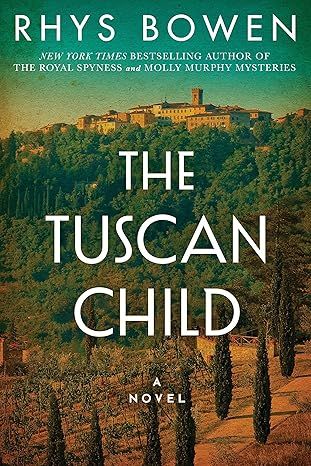
The Tuscan Child
4.2
-
100,022
$8.39
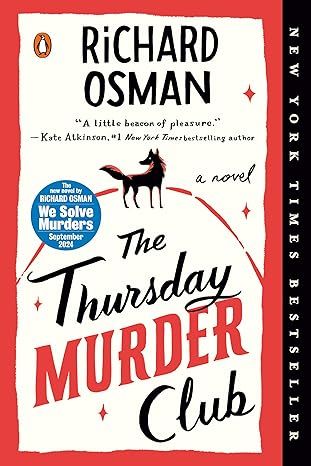
The Thursday Murder Club: A Novel (A Thursday Murder Club Mystery)
4.3
-
155,575
$6.33
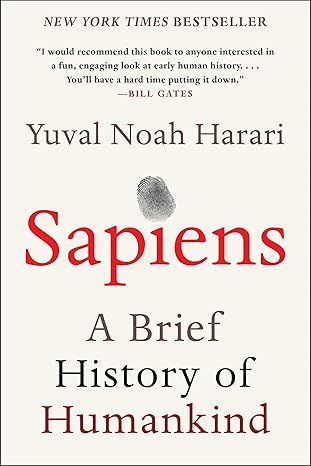
Sapiens: A Brief History of Humankind
4.6
-
140,302
$13.49
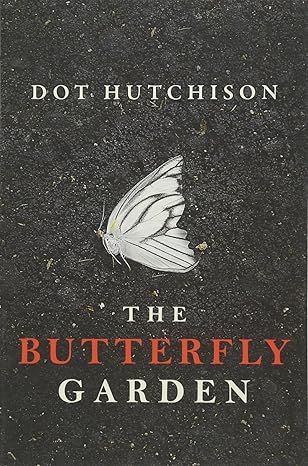
The Butterfly Garden (The Collector, 1)
4.3
-
88,556
$9.59
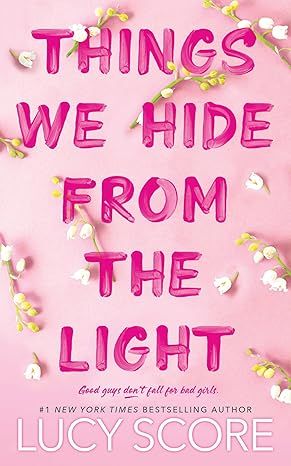
Things We Hide from the Light (Knockemout Series, 2)
4.4
-
94,890
$11.66
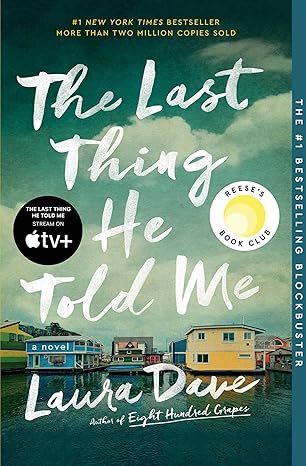
The Last Thing He Told Me: A Novel
4.3
-
154,085
$2.99

The Perfect Marriage: A Completely Gripping Psychological Suspense
4.3
-
143,196
$9.47
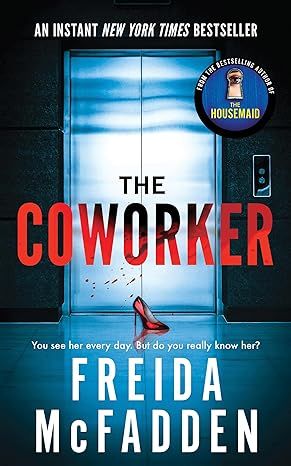
The Coworker
4.1
-
80,003
$13.48

First Lie Wins: A Novel (Random House Large Print)
4.3
-
54,062
$14.99
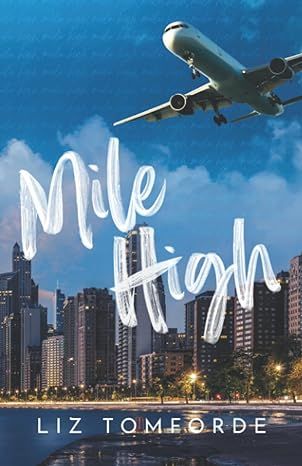
Mile High (Windy City Series Book 1)
4.4
-
59,745
$16.19

Layla
4.2
-
107,613
$8.99
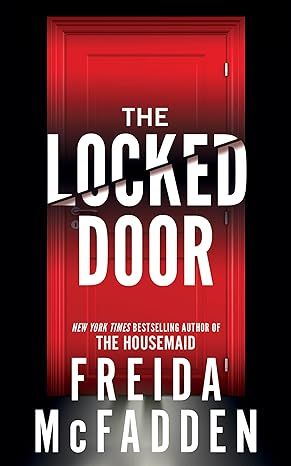
The Locked Door
4.4
-
94,673
$8.53
